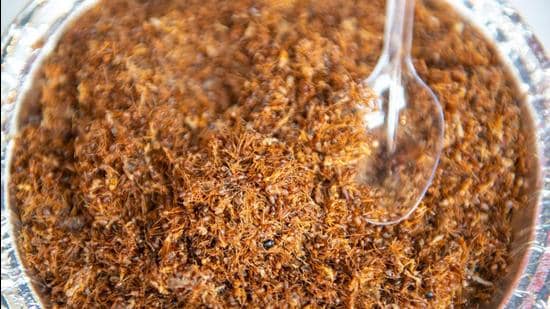Country & Western 1920s 1930s
-
Bob Wills & His Texas Playboys - Steel Guitar Rag (1936)3:25
-
Bob Wills & His Texas Playboys - Trouble In Mind (1936)3:32



Insects have been consumed as a food source for centuries in communities worldwide. In Odisha's Mayurbhanj district, red weaver ants are used to make a chutney or a watery semi-solid paste known as "Kai Chutney." This chutney is renowned in the region for its medicinal and nutritional properties. On January 2, 2024, this distinctive savoury chutney was awarded the geographical indication (GI) tag.

Red weaver ants, scientifically known as Oecophylla smaragdina, are notable for their extremely painful sting, capable of causing blisters on the skin. These ants are commonly found in the forests of Mayurbhanj, including the Similipal forests, which constitute Asia's second-largest biosphere.
Hundreds of tribal families in the district make a living by collecting and selling these insects and chutneys. The ants and their eggs are gathered from their nests and cleaned before being used. The chutney is made by grinding a mixture of salt, ginger, garlic, and chilies. Similar red ant chutneys can also be found in other eastern states such as Jharkhand and Chhattisgarh.

In addition to its culinary appeal, red ant chutney is renowned for its potential health benefits. The chutney is believed to be a good source of nutrients like protein, calcium, zinc, vitamin B-12, iron, magnesium, potassium, etc. This unique chutney is also treasured for its role in the development of a healthy brain and nervous system, potentially aiding in the management of conditions like depression, fatigue, and memory loss.
Based on various research and studies, the integration of insects into our diets as a protein source has been proposed as a potential solution to environmental challenges. Insects could substitute traditional animal protein sources like cows, which are known for their significant emissions of heat-trapping gases like carbon dioxide and methane. This approach has the capacity to mitigate environmental impact and foster a more sustainable food system.
Videos
Birbal khichdi
Birbal Khichdi is a popular Indian dish that has been passed down through generations, and its story is just as fascinating as its taste. According to legend, Birbal, a courtier in Akbar’s court, created this dish so enchanting that the emperor decided to make Birbal a king. The story goes that Birbal’s khichdi was so divine that it captured the hearts of everyone who tasted it.
The Story Behind the Dish
The story of Birbal Khichdi is a testament to the power of creativity and innovation. According to the legend, Akbar asked Birbal, “Will a man do anything for money?” Birbal replied, “Yes, Jahanpanah! It is possible for a man to do anything in return of some money.” Akbar then challenged Birbal to find a person who would spend a night in the cold water of a lake for a thousand gold coins. Birbal searched far and wide until he found a poor man who was desperate enough to accept the challenge. The poor man entered the lake, and Akbar had guards posted near him to ensure that he really did as promised. The next morning, the guards took the poor man to Akbar, who was impressed by his determination.
The Recipe
The recipe for Birbal Khichdi is a closely guarded secret, but it is believed to be a one-pot dish made with lentils, rice, and vegetables, cooked in a mixture of spices and herbs. The dish is said to have a unique flavor profile that is both comforting and aromatic.
The Moral
The moral of the story of Birbal Khichdi is that with determination and creativity, one can achieve anything. The story also highlights the importance of perseverance and the power of the human spirit.
Conclusion
Birbal Khichdi is a legendary dish that has captured the hearts of many with its fascinating story and mouth-watering taste. Whether you are a foodie or a history buff, the story of Birbal Khichdi is a must-read.